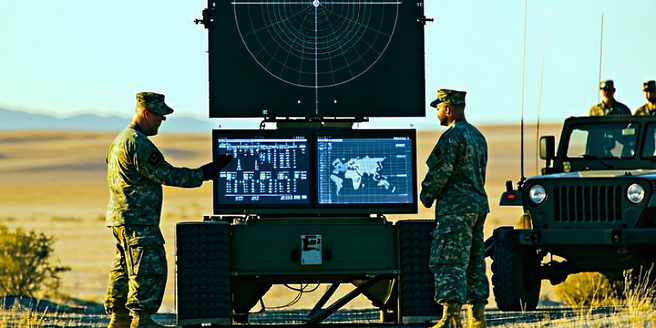
Understanding the Importance of Personalization
Personalization has become a critical component in technology, enabling businesses to tailor experiences to individual needs. By understanding user preferences and behaviors, systems can offer a more targeted approach, enhancing user satisfaction and efficiency. In radar systems, personalization means adjusting radar settings to suit specific operational requirements, geographical locations, and threats. This not only improves the effectiveness of detection and response but also minimizes false alerts and resource wastage. Personalization ensures that the radar serves its user optimally, aligning with organizational objectives and operational constraints. As technology evolves, the ability to personalize systems becomes not just a competitive edge but a necessity. Customization enhances user experience, supports strategic goals, and is key to maintaining relevance in an increasingly dynamic technological landscape.
Exploring Customization Options in Radar Systems
Modern radar systems offer a variety of customization options to meet the diverse needs of users. From frequency adjustment to signal processing techniques, operators have the flexibility to configure radars according to specific operational contexts. These settings can determine factors such as range, resolution, and detection capabilities. Tailoring these options allows users to focus on particular threats or areas, optimizing the system’s efficiency. Advanced algorithmic controls enable adaptability in real-time, adjusting parameters based on changing conditions. This level of customization is crucial in applications ranging from air traffic control to military operations, where precision and reliability are paramount. Understanding the different customization options available empowers users to fully utilize radar technologies, ensuring that they can respond effectively to the unique challenges they face.
How to Tailor Alerts to Specific Needs
Tailoring alerts in radar systems involves a strategic approach to ensure that notifications are relevant and actionable. Users can set parameters based on sensitivity levels, area coverage, and specific criteria such as speed or altitude for detection. This customization minimizes information overload by filtering out non-essential alerts and focusing on critical data that requires immediate attention. Operators can utilize historical data and trends to set dynamic thresholds, adapting alerts based on real-time analysis. The integration of machine learning technologies can further refine alert systems, predicting potential issues before they occur. By tailoring alerts, users enhance the responsiveness and accuracy of their radar operations, reducing response times and improving overall situational awareness. Custom alerts thus play a pivotal role in ensuring the effectiveness and efficiency of a radar system in dynamic environments.
Tools and Technologies for Enhanced Custom Alerts
The advancement of technology has introduced sophisticated tools for creating custom alerts in radar systems. Software solutions offer graphical interfaces that simplify the customization process, enabling users to easily set parameters and conditions for alerts. The integration of Artificial Intelligence (AI) and Machine Learning (ML) technologies allows for adaptive alert systems that evolve with user interaction and environmental changes. These tools provide predictive analytics, assessing patterns and behaviors to anticipate possible scenarios. Additionally, cloud-based platforms facilitate real-time data processing and cross-platform alert dissemination, ensuring timely delivery. Collaboration among radar system operators and IT professionals is vital to harness these technologies effectively. Leveraging these tools ensures that alerts are not only timely and relevant but also contribute to informed decision-making in radar operations.
Best Practices for Setting Up Personalized Radar Alerts
To set up personalized radar alerts effectively, one must follow best practices that enhance functionality and reliability. First, it is crucial to define the objectives and requirements of the alerts, aligning them with operational goals. Include stakeholders in the configuration process to ensure that the alerts serve the intended purpose. Utilize historical data to establish baseline criteria for alerts, allowing for dynamic adjustments as necessary. Regular testing and updates are essential to maintain the relevance and accuracy of the alerts, adapting to new threats and technological advancements. Ensuring easy access and comprehension of alert information is also important; thus, systems must be user-friendly. By following these best practices, organizations can create robust alert systems that support strategic objectives and facilitate proactive response efforts.
Future Trends in Radar Customization and Alerts
The future of radar customization and alerts is poised to be shaped by technological innovations and emerging challenges. As AI and machine learning technologies become more integrated, radar systems will likely offer even greater levels of personalization, learning from user interactions to provide tailored experiences. Enhanced connectivity and data sharing across platforms will facilitate holistic approaches to radar operations. Additionally, advancements in sensor technology and processing power promise greater accuracy and resolution, expanding the possibilities for customization. The application of augmented reality may offer new ways to visualize radar data, providing intuitive interaction methods. As threats evolve, radar systems will need to adapt more quickly, emphasizing the need for highly customizable and responsive alert mechanisms. Keeping abreast of these trends will be vital for organizations looking to maintain an edge in radar technology applications.
